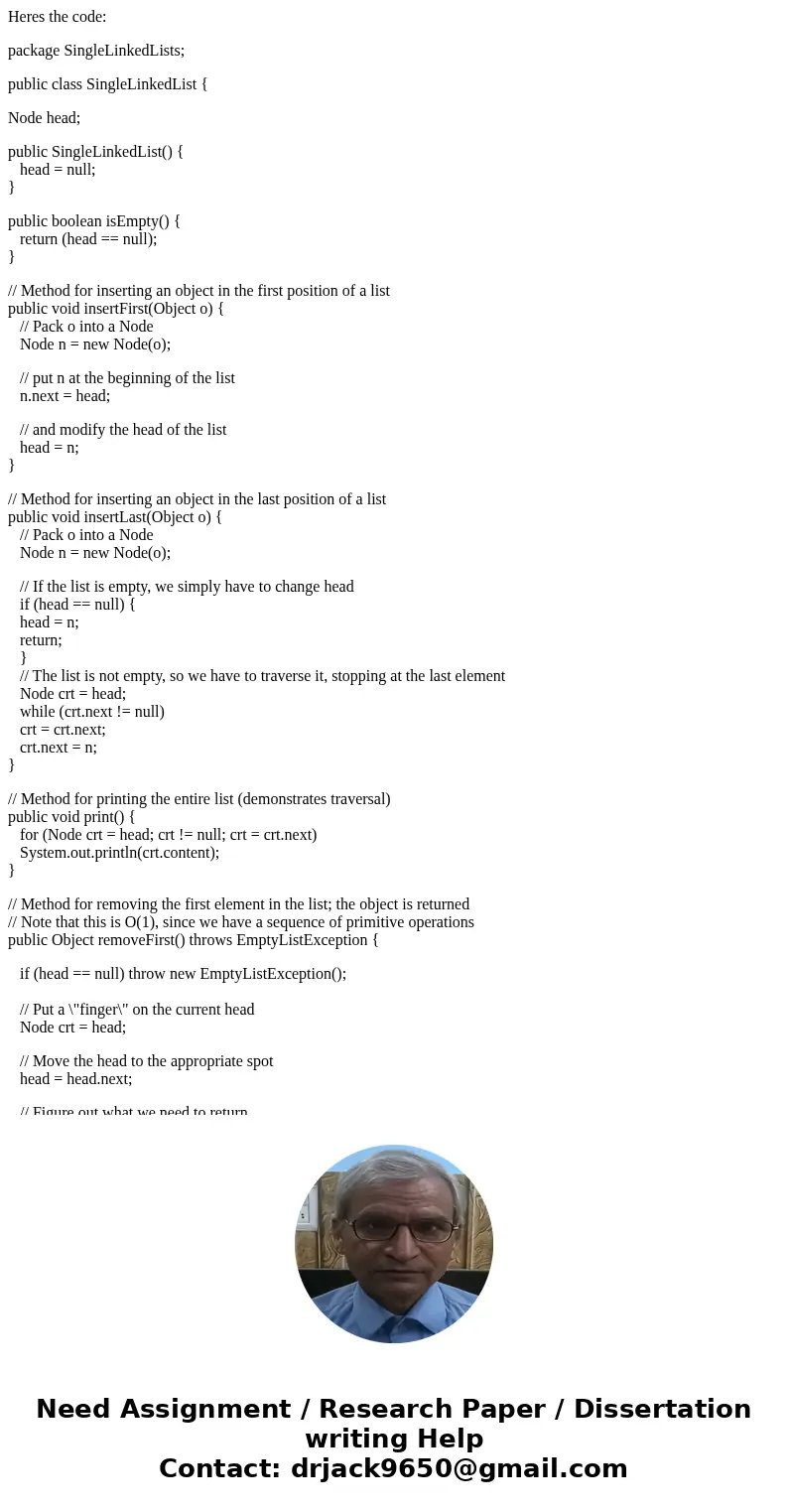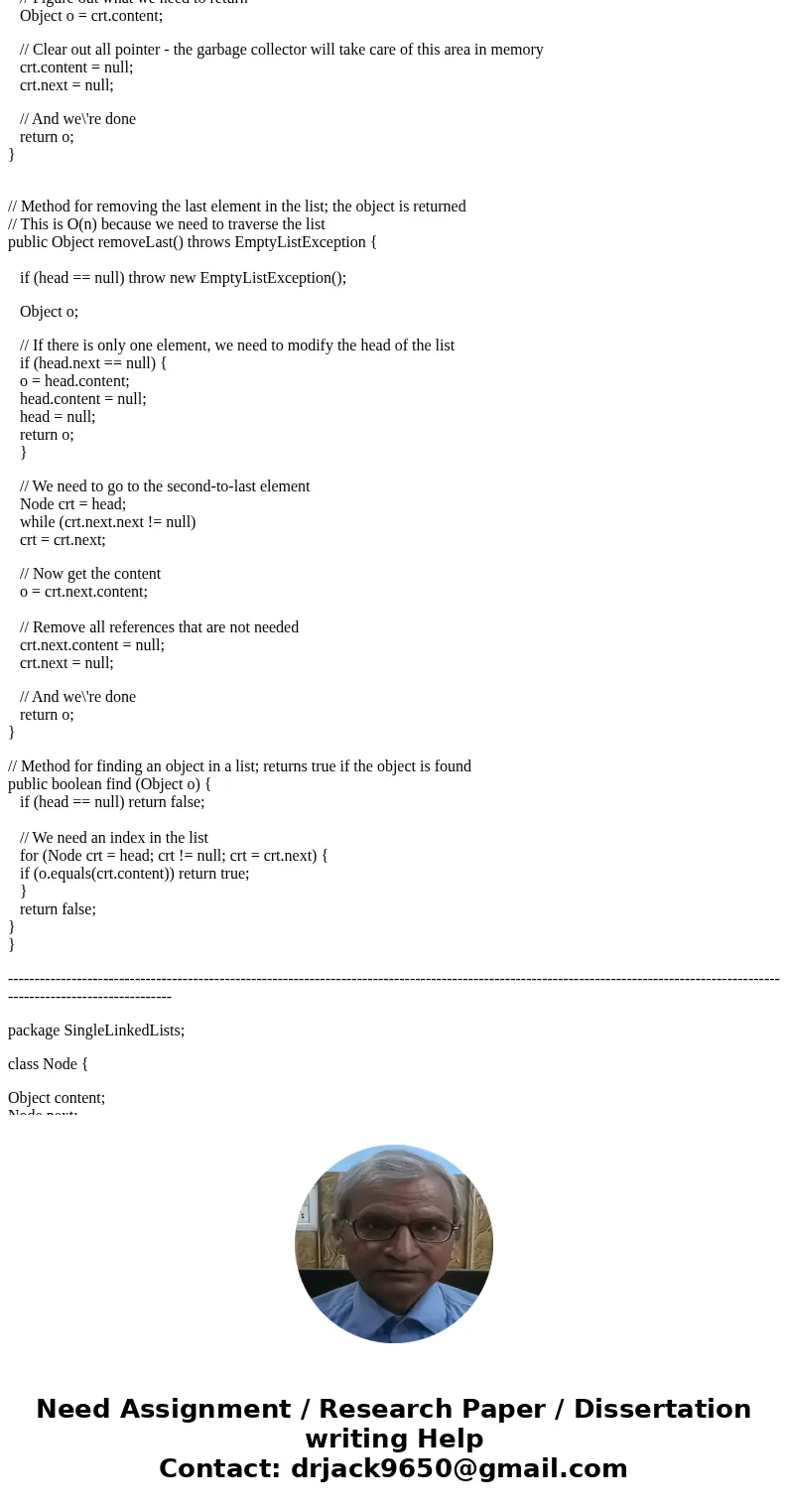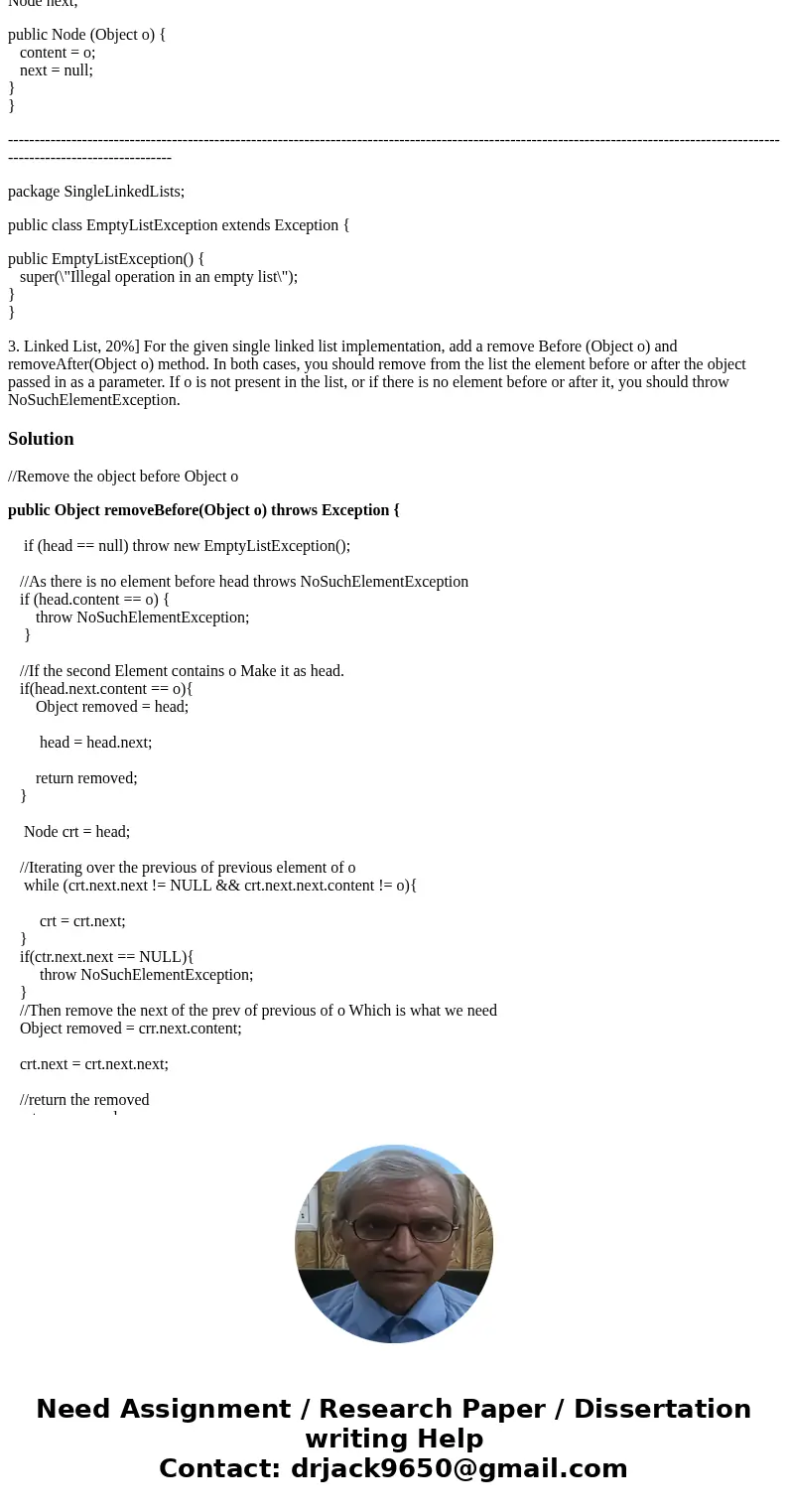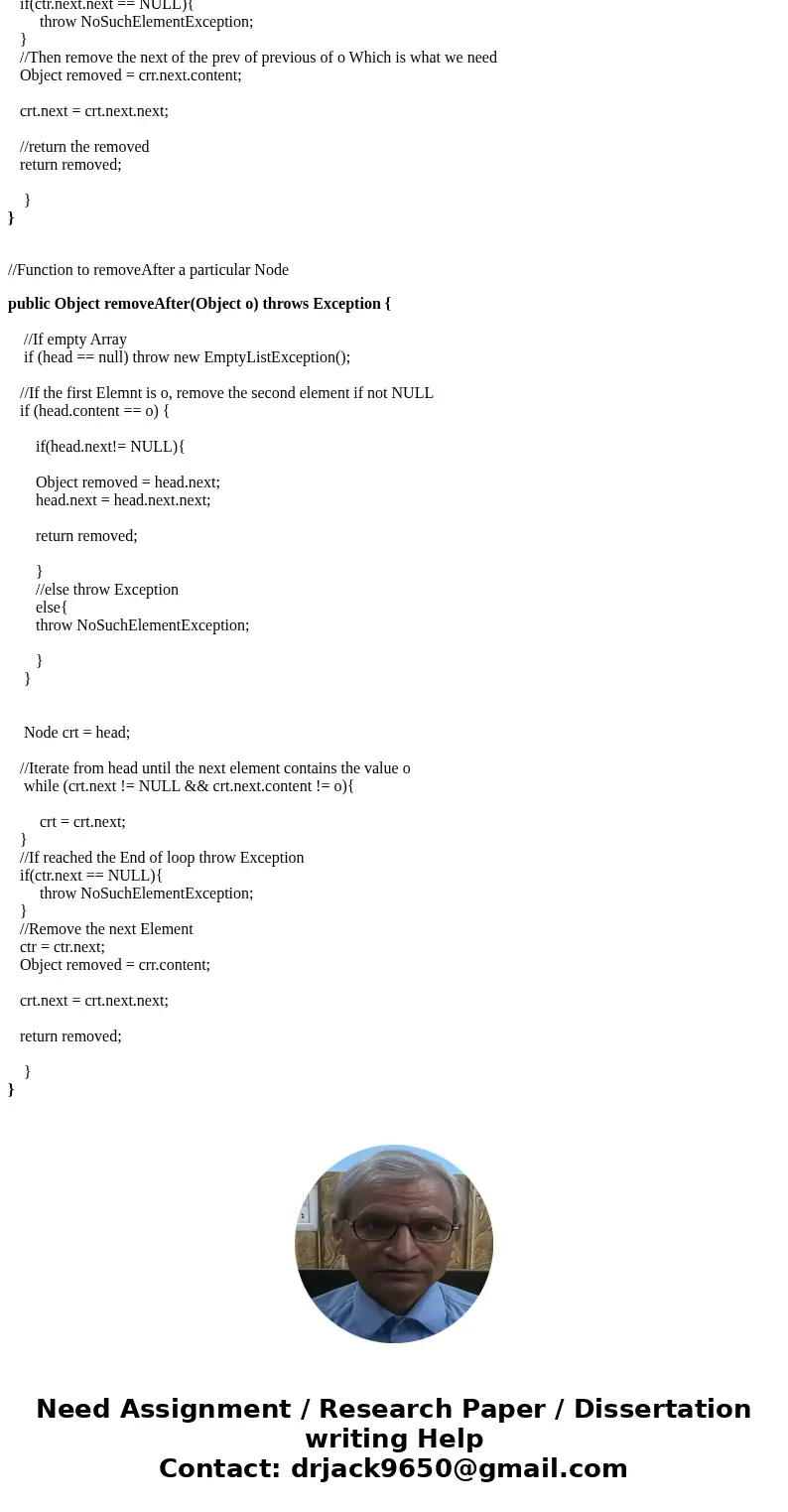Heres the code package SingleLinkedLists public class Single
Heres the code:
package SingleLinkedLists;
public class SingleLinkedList {
Node head;
public SingleLinkedList() {
head = null;
}
public boolean isEmpty() {
return (head == null);
}
// Method for inserting an object in the first position of a list
public void insertFirst(Object o) {
// Pack o into a Node
Node n = new Node(o);
// put n at the beginning of the list
n.next = head;
// and modify the head of the list
head = n;
}
// Method for inserting an object in the last position of a list
public void insertLast(Object o) {
// Pack o into a Node
Node n = new Node(o);
// If the list is empty, we simply have to change head
if (head == null) {
head = n;
return;
}
// The list is not empty, so we have to traverse it, stopping at the last element
Node crt = head;
while (crt.next != null)
crt = crt.next;
crt.next = n;
}
// Method for printing the entire list (demonstrates traversal)
public void print() {
for (Node crt = head; crt != null; crt = crt.next)
System.out.println(crt.content);
}
// Method for removing the first element in the list; the object is returned
// Note that this is O(1), since we have a sequence of primitive operations
public Object removeFirst() throws EmptyListException {
if (head == null) throw new EmptyListException();
// Put a \"finger\" on the current head
Node crt = head;
// Move the head to the appropriate spot
head = head.next;
// Figure out what we need to return
Object o = crt.content;
// Clear out all pointer - the garbage collector will take care of this area in memory
crt.content = null;
crt.next = null;
// And we\'re done
return o;
}
// Method for removing the last element in the list; the object is returned
// This is O(n) because we need to traverse the list
public Object removeLast() throws EmptyListException {
if (head == null) throw new EmptyListException();
Object o;
// If there is only one element, we need to modify the head of the list
if (head.next == null) {
o = head.content;
head.content = null;
head = null;
return o;
}
// We need to go to the second-to-last element
Node crt = head;
while (crt.next.next != null)
crt = crt.next;
// Now get the content
o = crt.next.content;
// Remove all references that are not needed
crt.next.content = null;
crt.next = null;
// And we\'re done
return o;
}
// Method for finding an object in a list; returns true if the object is found
public boolean find (Object o) {
if (head == null) return false;
// We need an index in the list
for (Node crt = head; crt != null; crt = crt.next) {
if (o.equals(crt.content)) return true;
}
return false;
}
}
---------------------------------------------------------------------------------------------------------------------------------------------------------------------------------
package SingleLinkedLists;
class Node {
Object content;
Node next;
public Node (Object o) {
content = o;
next = null;
}
}
---------------------------------------------------------------------------------------------------------------------------------------------------------------------------------
package SingleLinkedLists;
public class EmptyListException extends Exception {
public EmptyListException() {
super(\"Illegal operation in an empty list\");
}
}
Solution
//Remove the object before Object o
public Object removeBefore(Object o) throws Exception {
if (head == null) throw new EmptyListException();
//As there is no element before head throws NoSuchElementException
if (head.content == o) {
throw NoSuchElementException;
}
//If the second Element contains o Make it as head.
if(head.next.content == o){
Object removed = head;
head = head.next;
return removed;
}
Node crt = head;
//Iterating over the previous of previous element of o
while (crt.next.next != NULL && crt.next.next.content != o){
crt = crt.next;
}
if(ctr.next.next == NULL){
throw NoSuchElementException;
}
//Then remove the next of the prev of previous of o Which is what we need
Object removed = crr.next.content;
crt.next = crt.next.next;
//return the removed
return removed;
}
}
//Function to removeAfter a particular Node
public Object removeAfter(Object o) throws Exception {
//If empty Array
if (head == null) throw new EmptyListException();
//If the first Elemnt is o, remove the second element if not NULL
if (head.content == o) {
if(head.next!= NULL){
Object removed = head.next;
head.next = head.next.next;
return removed;
}
//else throw Exception
else{
throw NoSuchElementException;
}
}
Node crt = head;
//Iterate from head until the next element contains the value o
while (crt.next != NULL && crt.next.content != o){
crt = crt.next;
}
//If reached the End of loop throw Exception
if(ctr.next == NULL){
throw NoSuchElementException;
}
//Remove the next Element
ctr = ctr.next;
Object removed = crr.content;
crt.next = crt.next.next;
return removed;
}
}




 Homework Sourse
Homework Sourse